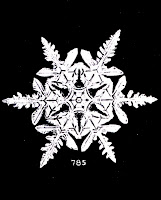It may cool you off a little, as we wallow in the current swelter, to think about the snow that fell in Calais, Maine, on July 20, 1890.
From the report “Observations of the New England Meteorological Society in the Year 1890,” published in the “Annals of the Astronomical Observatory of Harvard College,” New England in July had below-average temperatures and precipitation. The report describes a severe drought and extreme ranges in temperature for that month.
“Frosts occurred in all the northern states [Maine, New Hampshire, and Vermont] on July 10-12 and 19-23, and at Calais, Me., during the progress of a hailstorm on July 20, snow fell to an appreciable depth.” The report does not specify how appreciable a depth, but the fact that it accumulated enough to have any depth before melting must mean that the region was suffering a cold snap.
This is quintessential New England. If you don’t like the weather, wait a minute: it will change.
The current heat wave may compare (in recent memory) to New England’s summer of 1988. My husband and I were living on the third (top) floor of an old apartment building with no air conditioning in Woburn, MA. Because we were newly enlisted in Civil War reenacting, I spent most evenings after work sewing uniforms for us, jackets and trousers made of heavy wool. Day after day, week after week, temperatures soared into the nineties and above. It was too hot to sleep anyway, so I sewed. Every night (sometimes after midnight), once I heard the radio state that the night’s temperature in Boston had dropped to 80 degrees, it was finally cool enough for me to shower and go to bed, falling asleep before I got too hot again.
That summer was so hot for so long that the Woburn Public Library closed its doors, something that it had never done since it was built in 1881. The building is an old stone affair, built in the traditional style of public buildings of the late 19th Century. The stones do much to regulate heating and cooling in such buildings. That year, the stones absorbed the incessant heat and conducted it into the building, making the environment within unbearable for several weeks.
The children of my brother-in-law planned a 70th birthday party for their father that summer, and it was held one evening on the (also non-air-conditioned) second floor of a local function hall. Huge fans provided only the illusion of relief as they moved the blistering air around the room. The heat encouraged silliness among the guests (what else could one do? complain?), supplemented of course by a modicum of alcoholic abandon. We were moved to determine how many helium balloons were needed to lift an empty beer can.
We collected a number of the balloons decorating the room and began tying them to a can. Three or four might do the trick. But, no. We added a few more balloons, to no avail. Then more. Finally, a dozen and a half balloons later, the empty can lifted tenuously into the air, and drifted across the hall in the breeze of the fans, to much sodden cheering by the perpetrators.
Snow and hail from Calais would have spoiled all that fun.
Photos courtesy of:
NOAA www.photolib.noaa.gov (snowflake)
NASA www.solarsystem.nasa.gov (sun)





